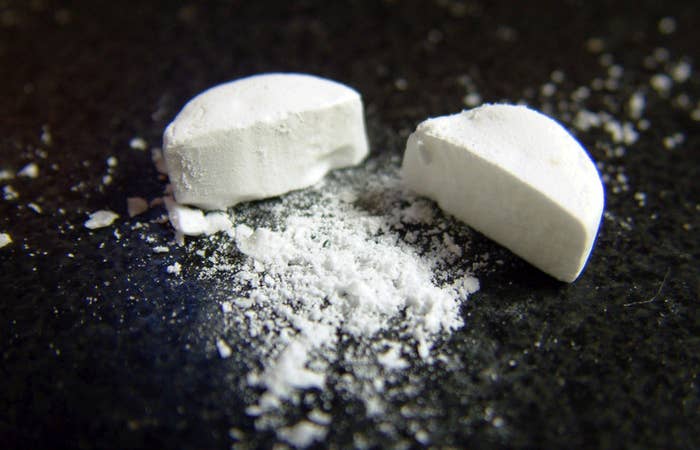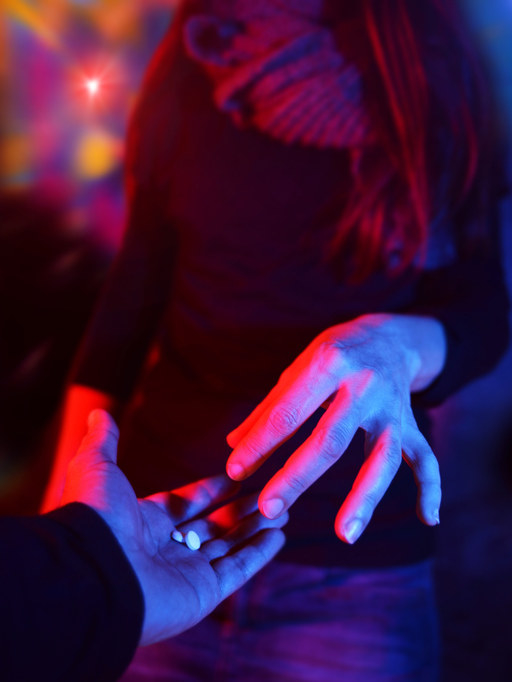A recent spate of deaths from illicit drugs at music festivals has reignited the call for pill-testing to be introduced in Australia.
Public health advocates and academics are calling on state and territory governments to introduce pill-testing to limit the danger of taking ecstasy pills by assessing a pill's chemical ingredients.
The primary ingredient in pure ecstasy is Methylenedioxy-methamphetamine (MDMA).
However, ecstasy tablets are commonly "cut" with filler ingredients, which can range from benign additions such as caffeine pills and dietary supplements to potentially lethal drugs such as synthetic stimulants.
During the 2018 pill-testing trial at ACT music festival Groovin the Moo, researchers discovered ecstasy capsules containing N-Ethylpentylone (ephylone), a "designer" stimulant responsible for deaths in the United States and South Africa in recent years. Ephylone was also responsible for the hospitalisation of 13 New Zealanders in early 2018.
Speaking on ABC Radio National this morning Liberal Jeremy Hanson, the shadow attorney-general in the ACT, stated that even if pill-testing was instituted and ecstasy pills were found to be pure MDMA, "people will take those pills anyway".
Hanson then stated that "you can test a poison all you like but it remains a poison".
Dr Stephen Bright, a psychologist and drug researcher from Curtin University, told BuzzFeed News that it is misleading to refer to MDMA alone as a poison and stated that "the dose makes the poison".
"Your medication for hypertension is a poison — it's all about taking it in the right dose," said Bright.
Bright says MDMA has been shown to cause no harm in moderate dosages in clinical settings. MDMA has been investigated as a therapeutic aid since the 1970s but in recent years, the US-based Multidisciplinary Association for Psychedelic Studies (MAPS) has shown promising results using the drug as a treatment for Post-Traumatic Stress Disorder (PTSD).

The MAPS clinical trials using MDMA to treat severe PTSD entered the third phase midway through 2018, after finding that 68% of participants in the phase 2 experiments no longer suffered from the chronic disorder a year after their therapy with the drug.
MAPS states that in its study participants, "MDMA transiently increases heart rate, blood pressure, and body temperature depending on dose, though none of these effects are problematic for physically healthy individuals".
Bright notes that physical issues such as cardiovascular disease, renal disease, and epilepsy increase the risk of complications with MDMA, as do mental illnesses such as bipolar disorder or schizophrenia.
Associate professor David Caldicott, a senior lecturer at the Australian National University and emergency doctor, told BuzzFeed News that MDMA has the same chemical actions in the brain as selective serotonin reuptake inhibitors (SSRIs) such as Prozac.
Doctor Nicole Lee from the National Drug Research Institute at Curtain University told BuzzFeed News that in terms of addiction, ecstasy appears to be a low-risk substance.
"Dependence and other long-term problems are quite rare – less than 1% of treatment presentations are for ecstasy," she said.
MDMA reduces functioning in the amygdala, decreasing fear responses, as well as releasing large amounts of oxytocin, a bonding hormone that leads to feelings of empathy and connectedness.
In the MAPS trials, participants are currently taking dosages of MDMA between 75mg and 125mg. Some recreational ecstasy pills, such as batches found in the Netherlands in 2015, have been found to contain up to 300mg, which is extremely dangerous.
Caldicott notes that "if you double-drop a pill that contains even 150mg, you're coming to me [in emergency]".
MDMA overdose involves cardiovascular problems, overheating, hypothermia and a condition known as rhabdomyolysis, which leads to organ failure, and death.
It can also cause serotonin syndrome, which is a toxic state caused by excess serotonin in the body that can cause agitation, high body temperature, shaking and seizures.
Caldicott notes that the tendency to take two or more ecstasy pills at a time is a problem that has been driven by the historically poor strength of the drug in Australia.
"When I was starting pill-testing ... pills would [often] contain no MDMA or contained say 50mg of MDMA," he said. "These drugs are now being manufactured in South-East Asia to really high purity and dose."

This increase in potency and dose is thought to have led to the UK experiencing a rise in the number of ecstasy-related deaths in recent years.
Caldicott notes that illegal drug markets incentivise manufacturers to create stronger drugs so they have to transport less mass.
"If you prohibit a drug, the inevitable effect of that is to increase the potency of that drug ... because what you want to do is move this drug from market to market and of course you want to decrease the volume to be detected," said Caldicott.
Caldicott believes that understanding quantity of dosages is an important component of education that should accompany pill-testing.
Is it possible to mitigate the dangers of taking pure MDMA?
Bright believes it's a matter of common sense, particularly in terms of water consumption.
"If people are dancing, we want them to be drinking water, maybe a litre an hour, and if they're not dancing, they're just chilling out with friends — maybe only 100 or 200ml of water."
Lee notes that MDMA disrupts electrolytes, which control water balance in the body as well as causing people to sweat and become dehydrated.
"If you don't have enough fluids your body can't cool itself properly and you risk heatstroke or hyperthermia," she said.
Ecstasy users are also at risk of water intoxication if they are consuming it too frequently, such as was seen in the death of UK teenager Leah Betts in 1995 who drank 7 litres of water in 90 minutes.
Bright also states that mixing MDMA with other illicit drugs or legal drugs such as alcohol increases its risk of harm.
